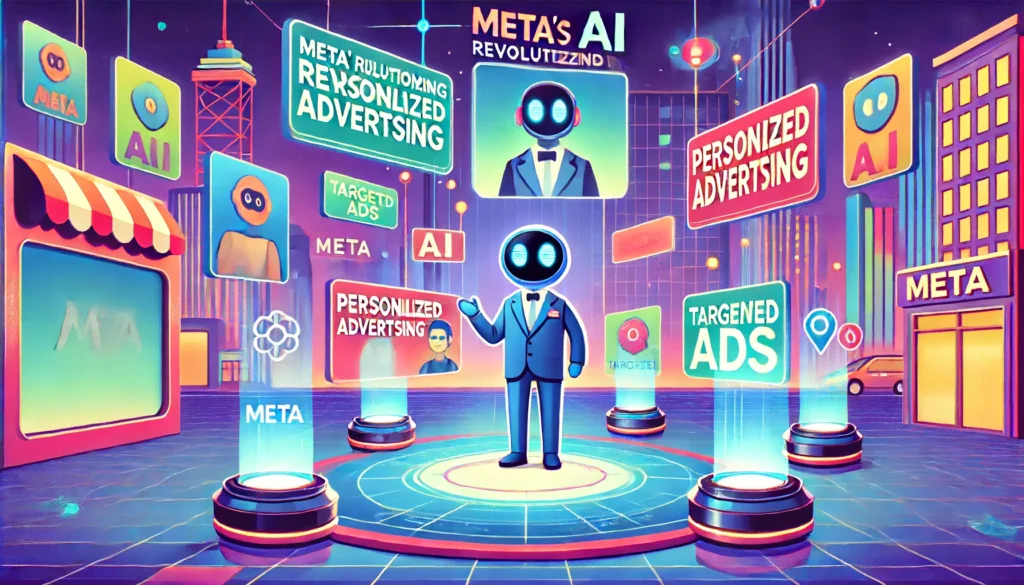
Hallucinated code occurs when AI models, particularly those used in code generation or suggestion, produce outputs that appear valid but contain flaws or inaccuracies. This phenomenon can result from biases in the training data, limitations in the model’s understanding, or misinterpretation of the input context.
Secure AI: Tackling Hallucinated Code Vulnerabilities
- Biases in Training Data:
- AI models are trained on large datasets of existing code. If the training data contains flawed or insecure code patterns, the AI may learn and replicate these patterns.
- Incomplete or unrepresentative datasets can also lead to biases, where the AI fails to learn certain coding practices or language features.
- Limitations in Model Understanding:
- AI models, especially those based on natural language processing (NLP), often lack deep semantic understanding. They might generate syntactically correct code that doesn’t function as intended or fails to meet security requirements.
- Models can struggle with complex logic or context-dependent instructions, leading to code that superficially appears correct but contains hidden errors.
- Misinterpretation of Input Context:
- The context provided to the AI model significantly influences its output. Ambiguous or poorly defined inputs can lead to hallucinations where the AI makes incorrect assumptions or generates irrelevant code.
- Misinterpretation can occur when the AI model tries to infer the developer’s intent without sufficient context, leading to outputs that do not align with the actual requirements.
Examples of Hallucinated Code Vulnerabilities
- Injection Attacks:
- The AI might generate code for handling user inputs without proper sanitization, making the application vulnerable to SQL injection or cross-site scripting (XSS) attacks.
- Logic Flaws:
- Generated algorithms might contain logical errors that cause incorrect processing of data, leading to vulnerabilities like improper access controls or incorrect calculations.
- Resource Mismanagement:
- Code might fail to correctly manage resources such as memory or file handles, resulting in leaks, crashes, or denial-of-service (DoS) conditions.
- Insufficient Validation:
- The AI might generate code that lacks proper input validation or error handling, allowing malicious inputs to exploit the system.
Addressing Hallucinated Code
To mitigate the risks associated with hallucinated code, several strategies can be employed:
- Enhanced Training Data:
- Ensure the training dataset is comprehensive, high-quality, and includes secure coding practices.
- Model Improvement:
- Develop models with better contextual understanding and the ability to explain their reasoning.
- Human Oversight:
- Incorporate human review and validation to catch errors that the AI might miss.
- Automated Testing:
- Use automated testing tools to detect and fix vulnerabilities in generated code before deployment.
- Ongoing Monitoring:
- Continuously monitor deployed code for any security issues and update the AI models accordingly.
Potential Risks of Hallucinated Code
Hallucinated code can introduce various security vulnerabilities that pose significant risks to software systems. These vulnerabilities can manifest in different ways, each with potentially severe consequences:
- Injection Attacks:
- SQL Injection: The AI might generate code that constructs SQL queries using unsanitized user inputs. This can allow attackers to execute arbitrary SQL commands, compromising the database.
- Cross-Site Scripting (XSS): The AI might produce code that fails to properly encode or escape user inputs in web applications, enabling attackers to inject malicious scripts that run in users’ browsers.
- Other Injection Attacks: Similar issues can arise with other types of injection attacks, such as LDAP injection or command injection, where unvalidated inputs are used in contexts that execute commands or queries.
- Logic Flaws:
- Incorrect Algorithms: The AI might generate algorithms that contain logical errors, leading to incorrect processing of data or failure to enforce security policies. For example, a flawed authentication algorithm might incorrectly grant access to unauthorized users.
- Unintended Behaviors: Subtle logic errors can cause the software to behave in unexpected ways, potentially opening up new attack vectors or disrupting normal operations.
- Resource Mismanagement:
- Memory Leaks: The AI might produce code that fails to properly allocate and deallocate memory, leading to memory leaks that degrade system performance over time and could eventually cause crashes.
- File Handle Leaks: Improper handling of file handles can result in resource exhaustion, preventing the application from opening new files or connections.
- Denial of Service (DoS): Resource mismanagement can make the system vulnerable to DoS attacks, where an attacker can exhaust resources and disrupt service availability.
- Insufficient Validation:
- Lack of Input Validation: The AI might generate code that does not adequately validate user inputs, allowing malicious inputs to pass through and potentially exploit vulnerabilities in downstream processing.
- Poor Error Handling: Inadequate error handling can result in unhandled exceptions, leaking sensitive information, or failing to log critical events, making it difficult to detect and respond to attacks.
Mitigating the Risks of Hallucinated Code
Addressing these risks requires a comprehensive approach that combines technical measures, best practices, and continuous improvement:
- Enhanced Model Training:
- Ensure the training data includes secure coding practices and examples of common vulnerabilities to teach the AI how to avoid generating insecure code.
- Regularly update the training data to include the latest security knowledge and practices.
- Rigorous Testing and Validation:
- Implement automated testing frameworks that include security tests for common vulnerabilities.
- Use static and dynamic analysis tools to detect potential security issues in the generated code.
- Conduct thorough code reviews, particularly for critical sections of code.
- Human-in-the-Loop:
- Involve security experts in the review process to validate the AI-generated code.
- Encourage collaborative development where developers can provide feedback to improve the AI’s performance.
- Robust Model Design:
- Develop AI models that can explain their decisions, making it easier for developers to understand and trust the generated code.
- Use incremental code generation, allowing for step-by-step validation and correction.
- Security Best Practices:
- Adhere to established coding standards and guidelines to ensure consistency and security.
- Regularly train developers on secure coding practices and emerging threats.
- Post-Deployment Monitoring:
- Implement runtime monitoring to detect and respond to suspicious behaviors in deployed code.
- Establish feedback loops to continuously improve the AI models based on real-world usage data and security incidents.
Addressing the Vulnerabilities
1. Enhanced Model Training
To mitigate the risks associated with hallucinated code, enhancing the training of AI models is crucial. This involves improving data quality and incorporating security-focused training.
Data Quality
- High-Quality Data: Ensure the training data comprises clean, well-documented, and correctly functioning code snippets. This helps the model learn from the best examples and reduces the likelihood of generating flawed code.
- Diverse Data: Use a wide range of code samples that cover different programming languages, frameworks, and use cases. This diversity helps the model generalize better and handle various coding scenarios accurately.
- Representative Data: Ensure the training data represents real-world coding practices, including both common and edge cases. This includes examples from different domains such as web development, systems programming, and data science.
Security-Focused Training
- Incorporate Security Best Practices: Include examples of secure coding practices in the training data. This can involve:
- Input Validation: Examples demonstrating proper input validation techniques to prevent injection attacks.
- Authentication and Authorization: Code snippets that implement robust authentication and authorization mechanisms.
- Error Handling: Proper error handling practices to prevent information leakage and ensure graceful degradation.
- Emphasize Common Vulnerabilities: Train the model on code samples that highlight common vulnerabilities, such as:
- SQL Injection: Examples of both vulnerable and secure ways to handle database queries.
- Cross-Site Scripting (XSS): Demonstrations of secure output encoding and sanitization techniques.
- Buffer Overflows: Examples that illustrate the importance of bounds checking in memory operations.
- Regular Updates: Continuously update the training data with the latest security best practices and knowledge of emerging threats. This ensures the model remains current and capable of generating secure code in an evolving threat landscape.
Implementation Strategies
Collaborate with Security Experts: Work closely with security experts to curate the training data. Their insights can help identify critical security practices and vulnerabilities to focus on.
Automated Data Curation: Develop tools and processes for automated curation of training data, ensuring consistency and quality. These tools can flag and filter out insecure or low-quality code snippets.
Feedback Loops: Establish feedback mechanisms where developers and users can report issues with generated code. Use this feedback to refine the training data and improve the model.
Benchmarking and Evaluation: Regularly benchmark the model against established security standards and evaluate its performance in generating secure code. Use these evaluations to guide further training and model improvements.
By focusing on data quality and incorporating security best practices into the training data, AI models can be better equipped to generate accurate, secure, and reliable code. This proactive approach helps in minimizing the risks of hallucinated code and enhancing the overall security of AI-assisted development processes.
2. Rigorous Testing and Validation
Rigorous testing and validation of AI-generated code are essential to ensure its correctness and security. This involves automated testing, as well as static and dynamic analysis.
Automated Testing
- Implement Automated Testing Frameworks: Develop and integrate automated testing frameworks that continuously test generated code. These frameworks should include:
- Unit Tests: Automatically generated tests that check individual components or functions for expected behavior.
- Integration Tests: Tests that validate the interactions between different parts of the code, ensuring they work together correctly.
- Regression Tests: Tests that ensure new changes do not introduce previously fixed bugs.
- Security Testing: Incorporate security-focused tests into the automated framework, such as:
- Fuzz Testing: Automatically inputting a wide range of unexpected or random data into the system to uncover vulnerabilities.
- Penetration Testing: Simulating attacks to identify potential security weaknesses.
- Continuous Integration (CI): Integrate automated testing into the CI pipeline to ensure that every code generation is tested immediately. This helps in catching issues early in the development cycle.
Static and Dynamic Analysis
- Static Code Analysis: Use static analysis tools to examine the code without executing it. These tools can detect potential security issues, such as:
- Code Smells: Indications of deeper problems in the code, such as overly complex functions or large classes.
- Security Vulnerabilities: Identification of common vulnerabilities, such as improper input validation, hardcoded credentials, and unsafe use of functions.
- Dynamic Code Analysis: Employ dynamic analysis to test the behavior of the code during execution. This includes:
- Runtime Monitoring: Observing the code’s behavior in a real or simulated runtime environment to identify issues such as memory leaks, race conditions, and performance bottlenecks.
- Behavioral Testing: Ensuring the code behaves as expected under various conditions, including edge cases and stress conditions.
Implementation Strategies
Automated Testing Frameworks
- Set Up Unit Testing Libraries: Use established libraries like JUnit (for Java), pytest (for Python), or Jest (for JavaScript) to create and manage unit tests for generated code.
- Create Comprehensive Test Suites: Develop a broad set of test cases that cover various aspects of the code, from basic functionality to complex interactions and edge cases.
- Continuous Monitoring and Reporting: Implement systems that continuously monitor the results of automated tests and report any issues. Use dashboards to visualize test results and trends over time.
Static and Dynamic Analysis Tools
- Static Analysis Tools: Integrate tools such as SonarQube, ESLint, or Pylint into the development pipeline to automatically scan code for potential issues.
- Dynamic Analysis Tools: Use tools like Valgrind (for memory analysis), OWASP ZAP (for security testing), or JProfiler (for performance profiling) to conduct dynamic analysis.
- Regular Code Audits: Schedule regular code audits that combine automated analysis with manual review by experienced developers to catch issues that automated tools might miss.
Feedback and Improvement
- Incorporate Developer Feedback: Allow developers to provide feedback on the generated code, particularly when issues are detected. Use this feedback to improve the testing frameworks and analysis tools.
- Iterative Improvement: Continuously refine and update the testing and validation processes based on feedback and the latest best practices in software testing and security.
3. Human-in-the-Loop
Involving human experts in the development process is crucial for ensuring the reliability and security of AI-generated code. This approach, known as “human-in-the-loop,” combines the strengths of AI with human expertise, leading to more accurate and secure software.
Expert Review
- Involve Security Experts: Engage experienced security professionals to review AI-generated code. Their expertise can help identify subtle security vulnerabilities that automated tools might miss.
- Code Audits: Conduct regular audits where experts thoroughly review the generated code, focusing on areas prone to security issues such as input handling, authentication, and encryption.
- Critical Applications: Prioritize expert review for code used in critical applications where security and correctness are paramount, such as financial systems, healthcare software, and infrastructure control systems.
- Peer Reviews: Implement a peer review process where developers review each other’s code, including AI-generated code. This collaborative approach helps catch errors and promotes knowledge sharing among team members.
- Pull Requests: Use pull request systems in version control platforms (e.g., GitHub, GitLab) to facilitate peer reviews and discussions about the generated code.
- Review Guidelines: Develop clear guidelines for code reviews, ensuring consistency and thoroughness in the review process.
Collaborative Development
- Feedback Mechanisms: Create feedback loops where developers can easily provide feedback on AI-generated code. This feedback helps the AI system learn from its mistakes and improve over time.
- Annotations and Comments: Allow developers to annotate or comment on specific parts of the generated code, highlighting issues or suggesting improvements.
- Rating Systems: Implement rating systems where developers can rate the quality of the generated code, providing a quantitative measure of the AI’s performance.
- Interactive Development Tools: Develop tools that facilitate real-time collaboration between AI systems and human developers. These tools should allow developers to interact with the AI, guiding it to produce better code.
- Code Suggestions: Provide AI-generated code suggestions in real-time as developers type, allowing them to accept, reject, or modify the suggestions.
- Interactive Debugging: Enable developers to work with the AI in debugging sessions, where the AI assists in identifying and fixing issues.
- Training and Education: Educate developers on how to effectively work with AI systems. Training programs can help developers understand the strengths and limitations of AI-generated code and how to best utilize AI tools in their workflows.
- Workshops and Seminars: Organize workshops and seminars focused on AI-assisted development, covering topics like security best practices and effective collaboration techniques.
- Documentation and Tutorials: Provide comprehensive documentation and tutorials that guide developers on using AI tools and interpreting AI-generated code.
Implementation Strategies
Establish Review Processes
- Set Up Review Boards: Form review boards comprising experienced developers and security experts who regularly review AI-generated code, particularly for high-stakes projects.
- Define Review Criteria: Establish clear criteria for what constitutes secure and high-quality code, ensuring consistency across reviews.
Integrate Collaborative Tools
- Version Control Integration: Integrate AI tools with version control systems to streamline the review and feedback process.
- Real-Time Collaboration Platforms: Use platforms like Visual Studio Live Share or collaborative IDEs that support real-time code editing and review.
Continuous Improvement
- Iterative Feedback: Use the feedback from developers to continuously improve the AI models. Regularly update the models based on the latest insights from human reviews.
- Monitor and Adjust: Continuously monitor the effectiveness of the human-in-the-loop process and make adjustments as needed to enhance collaboration and code quality.
4. Robust Model Design
Designing robust AI models is essential to mitigate the risks associated with hallucinated code. Two critical aspects of robust model design are explainability and incremental development.
Explainability
- Transparent Models: Develop AI models that provide clear explanations for their decisions. This transparency helps developers understand why a particular piece of code was generated, making it easier to identify and rectify potential issues.
- Decision Logs: Implement features that log the decision-making process of the AI, detailing how and why certain code snippets were generated.
- Annotations: Include annotations in the generated code that explain the reasoning behind specific decisions, such as the choice of algorithm or security measures applied.
- User Interfaces for Explanation: Create user-friendly interfaces that allow developers to query the AI about its decisions.
- Interactive Dashboards: Use interactive dashboards that display the logic behind the code generation process and highlight key decision points.
- Explanation Tools: Develop tools that provide visual representations of the AI’s decision-making process, such as flowcharts or decision trees.
- Model Introspection: Enable the AI models to introspect and provide meta-information about their own behavior.
- Self-Assessment: Allow the AI to assess its confidence level in the generated code and flag areas where it is less certain, prompting additional review by developers.
Incremental Development
- Step-by-Step Code Generation: Design models to generate code incrementally, rather than all at once. This approach allows developers to validate and correct the code at each step, reducing the risk of compounded errors.
- Modular Code Generation: Break down the code generation process into smaller, manageable modules. Each module can be reviewed and validated independently before moving on to the next.
- Iterative Refinement: Allow developers to interact with the AI iteratively, refining the code in stages. This can involve prompting the AI to generate specific parts of the code based on developer input.
- Validation Points: Incorporate validation points throughout the code generation process where developers can review and approve the generated code.
- Checkpoints: Establish checkpoints after each significant code generation phase, ensuring that the code meets quality and security standards before proceeding.
- Feedback Loops: Create feedback loops where developers can provide corrections or suggestions at each stage, helping the AI learn and improve over time.
- Continuous Improvement: Use insights gained from the incremental development process to continuously enhance the AI models.
- Performance Monitoring: Monitor the performance of the AI in real-time, using metrics such as accuracy, security, and developer satisfaction to guide improvements.
- Adaptive Learning: Implement adaptive learning techniques that allow the AI to update its knowledge base and improve its code generation capabilities based on real-world feedback and new data.
Implementation Strategies
Explainability Tools
- Explainable AI (XAI) Frameworks: Use existing XAI frameworks and libraries to build explainability into your models. Examples include LIME (Local Interpretable Model-agnostic Explanations) and SHAP (SHapley Additive exPlanations).
- Custom Explainability Solutions: Develop custom solutions tailored to the specific needs of code generation, ensuring that explanations are relevant and useful for developers.
Incremental Development Practices
- Agile Methodologies: Incorporate agile development methodologies that emphasize iterative and incremental development, fostering a collaborative environment between AI and developers.
- Version Control Systems: Use version control systems to manage incremental code changes, allowing for easy rollback and comparison of different code versions.
Training and Education
- Explainability Training: Train developers on how to interpret and utilize the explanations provided by the AI, enhancing their ability to work effectively with AI-generated code.
- Incremental Development Workshops: Conduct workshops and training sessions on incremental development practices, emphasizing the importance of step-by-step validation and continuous feedback.
5. Security Best Practices
Implementing and adhering to security best practices is essential for minimizing the risk of introducing vulnerabilities through AI-generated code. This involves following established coding standards and regularly updating AI models with the latest security knowledge.
Coding Standards
- Adhere to Established Standards: Follow widely recognized coding standards and guidelines to ensure consistency and security in the code.
- Language-Specific Standards: Use standards specific to the programming languages being used, such as PEP 8 for Python, the Java Code Conventions, and the MISRA C guidelines for C/C++.
- Security Standards: Incorporate security-focused coding standards such as OWASP Secure Coding Practices, CERT Secure Coding Standards, and ISO/IEC 27001.
- Automated Code Analysis: Use automated tools to enforce coding standards and best practices.
- Linting Tools: Integrate linting tools into the development pipeline to automatically check for adherence to coding standards.
- Code Review Tools: Employ tools that facilitate automated and manual code reviews, ensuring that generated code complies with security and quality standards.
- Security Training for Developers: Provide training for developers on secure coding practices and standards.
- Workshops and Courses: Organize workshops and courses focused on secure coding practices and how to apply them in daily development activities.
- Guidelines and Documentation: Develop and distribute comprehensive guidelines and documentation on security best practices.
Regular Updates
- Continuous Learning and Adaptation: Continuously update AI models with the latest security practices and knowledge about emerging threats.
- Security Patches and Updates: Regularly apply security patches and updates to the AI models to protect against newly discovered vulnerabilities.
- Threat Intelligence Feeds: Use threat intelligence feeds to keep the models informed about the latest security threats and vulnerabilities.
- Dynamic Model Training: Implement dynamic training processes that allow AI models to learn and adapt to new security threats in real-time.
- Incremental Training: Continuously train models on new data, incorporating recent examples of secure and insecure code.
- Feedback Incorporation: Use feedback from developers and security experts to refine the models, addressing any identified shortcomings or vulnerabilities.
- Collaborative Security Research: Engage with the wider security community to stay updated on the latest security research and trends.
- Conferences and Workshops: Participate in security conferences and workshops to learn from experts and share knowledge about AI security practices.
- Research Publications: Follow and contribute to research publications in the field of AI and cybersecurity, staying abreast of new developments and innovations.
Implementation Strategies
Establish Coding Standards
- Develop Comprehensive Guidelines: Create detailed guidelines that outline the coding standards and security best practices to be followed by all developers.
- Regular Audits and Reviews: Conduct regular audits and reviews to ensure compliance with the established standards and guidelines.
Update Models Regularly
- Scheduled Updates: Set a regular schedule for updating AI models with the latest security information and practices.
- Automated Update Systems: Develop automated systems that facilitate the seamless integration of updates into the AI models, minimizing downtime and manual intervention.
Training and Education
- Continuous Training Programs: Implement continuous training programs that keep developers and AI practitioners up-to-date with the latest security practices and coding standards.
- Resource Libraries: Create and maintain resource libraries that provide access to the latest security guidelines, research papers, and best practices documentation.
Monitoring and Improvement
- Security Monitoring Tools: Deploy security monitoring tools that continuously scan for vulnerabilities and provide real-time alerts.
- Feedback Mechanisms: Establish feedback mechanisms that allow developers to report security issues and suggest improvements to the AI models.
6. Post-Deployment Monitoring
Post-deployment monitoring is essential to ensure the ongoing security and reliability of AI-generated code. This involves implementing runtime monitoring and establishing feedback loops to continuously improve the model’s performance and security awareness.
Runtime Monitoring
- Implement Monitoring Tools: Deploy comprehensive monitoring tools to observe the behavior of the deployed code in real-time.
- Application Performance Monitoring (APM): Use APM tools to track the performance of the application, including response times, throughput, and error rates. Examples include New Relic, Dynatrace, and AppDynamics.
- Security Information and Event Management (SIEM): Integrate SIEM solutions to collect and analyze security-related data from various sources, providing a centralized view of potential security threats. Popular SIEM tools include Splunk, LogRhythm, and IBM QRadar.
- Runtime Application Self-Protection (RASP): Utilize RASP solutions that can detect and prevent security threats in real-time, offering protection from common vulnerabilities such as SQL injection and cross-site scripting (XSS).
- Behavioral Analysis: Continuously analyze the behavior of the application to identify any deviations from normal patterns.
- Anomaly Detection: Implement anomaly detection systems that can identify unusual activities that may indicate a security breach or performance issue.
- User Behavior Analytics (UBA): Monitor user interactions to detect suspicious behavior, such as unauthorized access attempts or data exfiltration activities.
- Incident Response: Develop and implement incident response procedures to quickly address any detected issues.
- Alerting Systems: Set up alerting mechanisms to notify relevant personnel when suspicious behavior or potential security incidents are detected.
- Automated Responses: Implement automated responses to certain types of incidents, such as isolating affected components or blocking malicious activities.
Feedback Loops
- Real-World Usage Data: Collect and analyze real-world usage data to continuously improve the AI models.
- Usage Metrics: Gather metrics on how the AI-generated code is used in production, including performance data, error rates, and user feedback.
- Security Incidents: Record details of any security incidents or breaches to understand their root causes and improve the model’s security capabilities.
- Continuous Improvement: Use the feedback from real-world usage to refine and enhance the AI models.
- Model Retraining: Regularly retrain the models using updated data that includes recent usage patterns, performance metrics, and security incidents.
- Algorithm Adjustments: Adjust the underlying algorithms based on feedback to improve the accuracy, efficiency, and security of the generated code.
- Developer Feedback: Encourage developers to provide feedback on the AI-generated code and its performance in real-world scenarios.
- Feedback Channels: Establish clear channels for developers to report issues, suggest improvements, and share their experiences with the AI-generated code.
- Collaborative Platforms: Use collaborative platforms like JIRA, Slack, or GitHub to facilitate communication and feedback between developers and AI model maintainers.
Implementation Strategies
Deploy Monitoring Solutions
- Select Appropriate Tools: Choose monitoring tools that best fit the application’s needs, considering factors such as scalability, ease of integration, and the specific types of data to be monitored.
- Integration with CI/CD Pipelines: Integrate monitoring solutions with continuous integration/continuous deployment (CI/CD) pipelines to ensure that monitoring is part of the overall development and deployment process.
Establish Feedback Mechanisms
- Regular Feedback Sessions: Conduct regular feedback sessions with developers and stakeholders to gather insights and suggestions for improvement.
- Data-Driven Decision Making: Use the collected data to drive decisions about model updates and enhancements, ensuring that changes are based on real-world evidence.
Training and Awareness
- Educate Teams: Train development and operations teams on the importance of post-deployment monitoring and how to use the tools effectively.
- Awareness Campaigns: Conduct awareness campaigns to highlight the role of continuous monitoring and feedback in maintaining the security and performance of AI-generated code.
Iterative Improvement
- Regular Updates and Patches: Schedule regular updates and patches to the AI models based on the insights gained from monitoring and feedback.
- Benchmarking and Evaluation: Continuously evaluate the performance and security of the AI models against benchmarks to ensure they meet the required standards.
Conclusion
Addressing vulnerabilities from hallucinated code requires a multi-faceted approach that combines high-quality training data, rigorous testing, human oversight, robust model design, adherence to security best practices, and continuous monitoring. By implementing these strategies, organizations can significantly reduce the risk of security vulnerabilities in AI-generated code, ensuring safer and more reliable AI development practices.
Resources for Securing AI Development and Addressing Hallucinated Code
- Books and Publications
- “Artificial Intelligence: A Guide for Thinking Humans” by Melanie Mitchell
- “AI Superpowers: China, Silicon Valley, and the New World Order” by Kai-Fu Lee
- “Machine Learning Yearning” by Andrew Ng (Free e-book)
- Online Courses and Tutorials
- Coursera: “AI For Everyone” by Andrew Ng
- edX: “Artificial Intelligence MicroMasters Program” by Columbia University
- Udacity: “AI Programming with Python Nanodegree”
- Research Papers and Articles
- “Attention Is All You Need” by Vaswani et al. (Introduces Transformer models)
- “Explaining and Harnessing Adversarial Examples” by Goodfellow et al.
- Articles on arXiv.org under the Artificial Intelligence category
- Tools and Frameworks
- TensorFlow: TensorFlow (An open-source machine learning framework)
- PyTorch: PyTorch (An open-source machine learning library)
- SonarQube: SonarQube (An open-source platform for continuous inspection of code quality)
- Security Best Practices
- OWASP: OWASP Secure Coding Practices
- CERT: CERT Secure Coding Standards
- ISO/IEC 27001: ISO/IEC 27001 (International standard for information security management)
- Monitoring and Analysis Tools
- Communities and Forums
- Stack Overflow: Stack Overflow (Community for developers to ask and answer coding questions)
- Reddit: r/MachineLearning and r/AISafety
- Kaggle: Kaggle (Online community of data scientists and machine learning practitioners)
- Industry News and Trends
- MIT Technology Review: MIT Technology Review
- AI Weekly: AI Weekly (Newsletter covering the latest in AI research and industry news)
- Towards Data Science: Towards Data Science (Medium publication with articles on AI and machine learning)
- Ethics and Policy Resources
- AI Ethics Guidelines: European Commission’s Ethics Guidelines
- The Partnership on AI: Partnership on AI (Organization dedicated to ensuring AI is beneficial to society)
- AI Now Institute: AI Now Institute (Research institute examining the social implications of AI)
- Interactive Learning Platforms
- Google Colab: Google Colab (Interactive Jupyter notebook environment)
- Khan Academy: Khan Academy (Courses on various programming and AI-related topics)
- Codecademy: Codecademy (Interactive platform for learning to code)
These resources provide comprehensive information and tools for understanding, developing, and securing AI systems, addressing vulnerabilities, and improving the overall security and reliability of AI-generated code.





